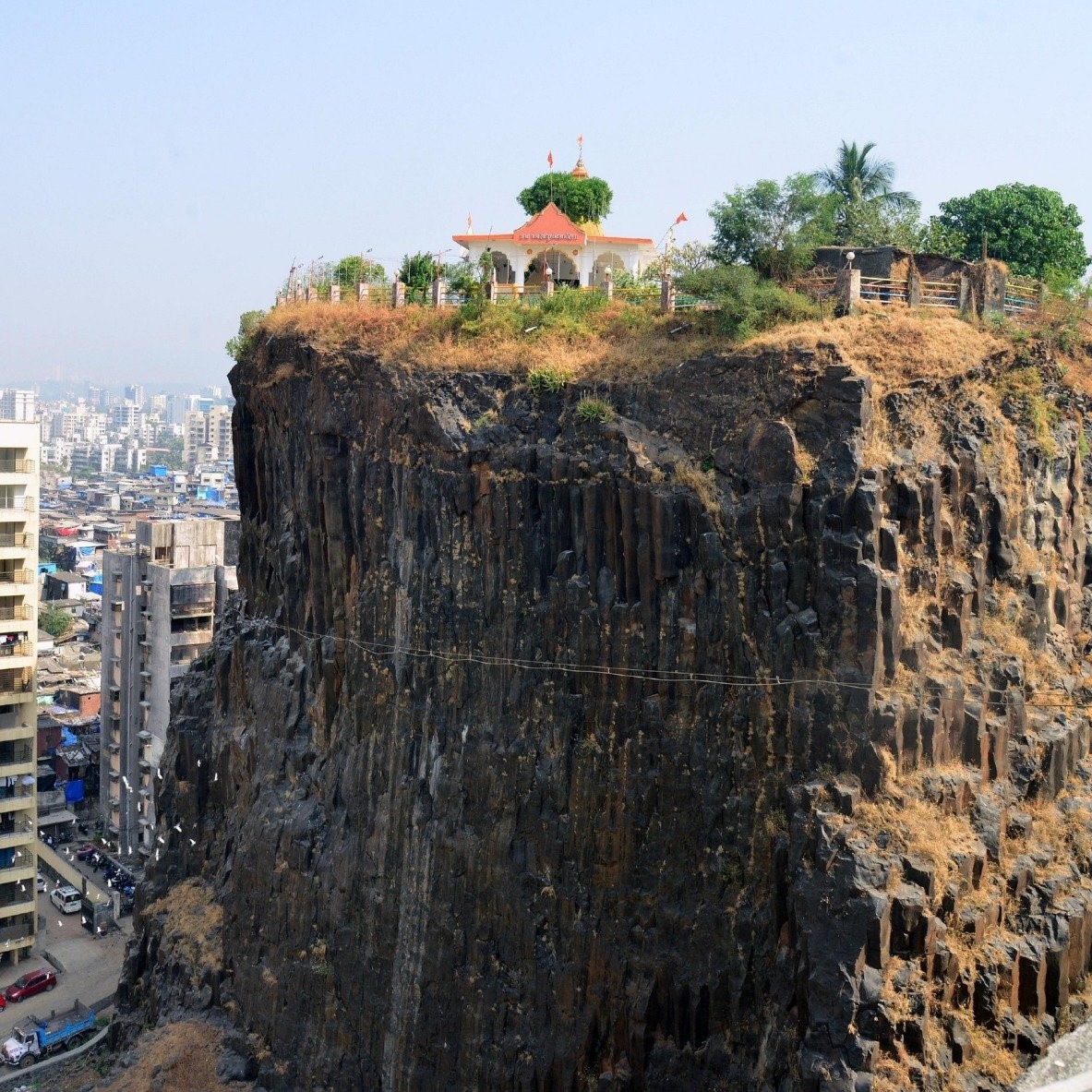Description

Disclaimer: Copyright infringement not intended.
Context
- Gilbert Hill in Andheri West is not a hidden or a secret structure, but what it stands for is something which many people are unaware of.
- The structure is one of the world's oldest basalt rock formations which have withstood the test of time.
Details
- Maharashtra is situated on the Deccan Plateau, which is composed of volcanic soil and is relatively barren.
- In this section of the country, there must have been a volcanic explosion or something similar that created the black soil and infertile plateau.
- What Happened 66 Million Years Ago?
- It is said that a gigantic bubble of lava froze in mid air at different place across the globe and formed three gigantic rocks which stand as a testimony to the earliest life on the planet.
- Gilbert Hill is a monolith column of black basalt rock and actually dates back to the Mesozoic Era which dates back to 66 million years ago.

Gilbert hill
About
- It is a 200-foot monolithic column of black basalt rock located in Mumbai's Andheri district.
- The sheer vertical face of the rock was produced when molten lava was forced out of the Earth's clefts some 66 million years ago during the Mesozoic Era.
- It was designated a National Park in 1952 and a Grade II cultural structure by the Brihan Mumbai Municipal Corporation in 2007.
- The 'hill' is one of just three volcanic rock outcrops on the planet.
- Gilbert Hill, arguably the country's oldest heritage property in its original form, contains a few temples and a tiny garden atop. A steep staircase chiseled into the rock leads to these.
Facts about Mesozoic era
- This era lasted around 252 million years and ended approximately 66 million years ago.
- This epoch is separated into three periods, which are the Triassic, Jurassic, and Cretaceous.
The Triassic period:
- The Triassic period, which began roughly 250 million years ago and ended approximately 200 million years ago, is commonly divided into three major epochs: the Early Triassic, Middle Triassic, and Late Triassic Epochs.
- Various species, notably nothosaurs and ichthyosaurs, began to evolve during this time period.
- Crustaceans and corals of all kinds began to proliferate as well.
- By the end of the Triassic Period, reptilian development had exploded, and dinosaurs had also begun to evolve.
- However, as global temperatures began to increase, the Fourth Major Extinction, commonly known as the Triassic-Jurassic Extinction Event, occurred.
- Except for crocodiles, this event wiped out all archosaurs and nearly all large amphibians that lived at the period.
- It also wiped out more than 30% of all aquatic animals.
The Jurassic period:
- The Jurassic Period, which lasted from 200 to 145 million years ago, is one of the most well-known periods on the Geologic Time Scale.
- This time period is classified into three major epochs: the Early Jurassic, Middle Jurassic, and Late Jurassic Epochs.
- Huge fern prairies traversed the land masses during the beginning of this epoch on the geological time scale, and dinosaurs like Diplodocus and Brachiosaurus grazed on these fern forests.
- During this time, true crocodiles also began to evolve.
- By the conclusion of the Jurassic Period, there was an extinction known as the Jurassic-Cretaceous Extinction Event, which killed off a large number of species.
- This extinction event, however, is not regarded one of the significant ones on the prehistoric timeframe.
The Cretaceous Period (145 to 66 million years ago):
- This period the dinosaurs reach their zenith of diversity.
- The temperature cooled and dried out, and the continents continued to drift apart.
- The period ended with the Cretaceous-Paleogene (K-Pg) extinction, which was most likely triggered by a combination of events.
- This event resulted in the extinction of non-avian dinosaurs as well as many other species.
|
PRACTICE QUESTION
- Consider the following pairs:
- Cretaceous – Paleogene: Evolve of crocodile
- Jurrassic period : Extinction of non-avian dinosaurs
- Triassic period: wiped out more than 30% of all aquatic animals
How many of the above pairs is/are correct?
- A) Only one
- B) Only two
- C) All three
- D) None
Answer: A
|

https://indianexpress.com/article/cities/mumbai/gilbert-hill-to-be-developed-on-the-lines-of-burj-khalifa-lodha-8922457/
https://www.nativeplanet.com/travel-guide/gilbert-hill-the-best-kept-secret-of-mumbai-003739.html?story=4











